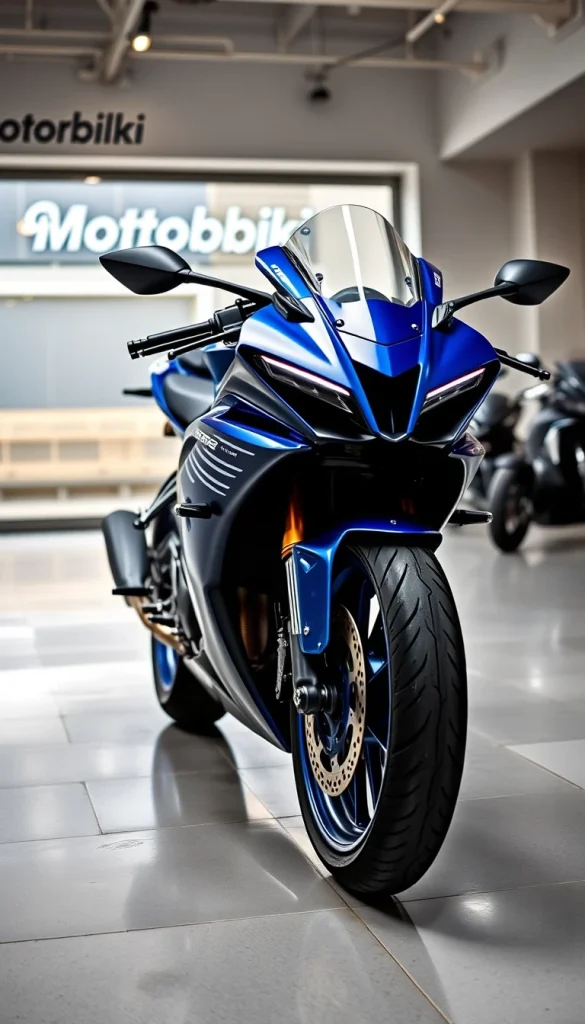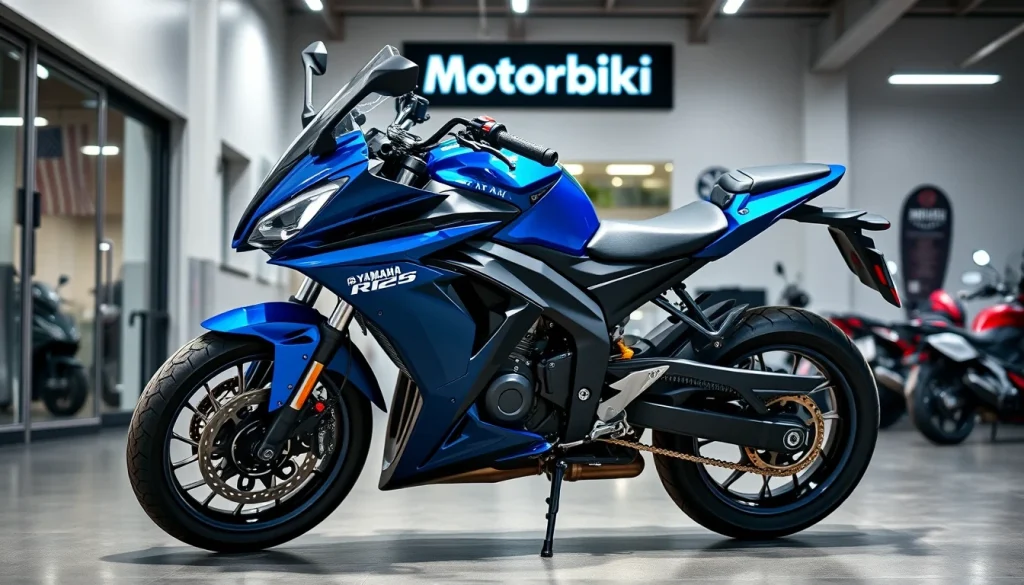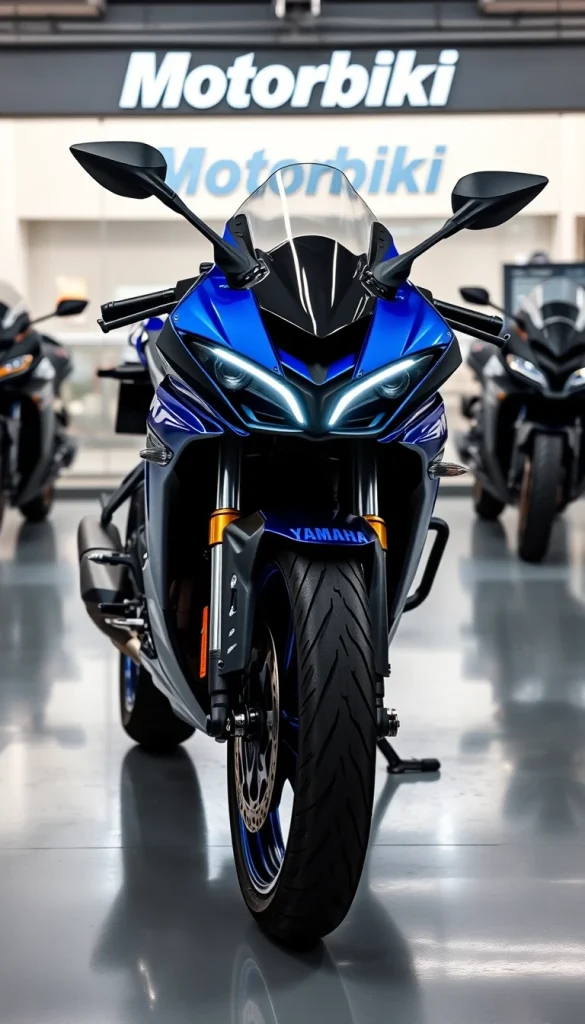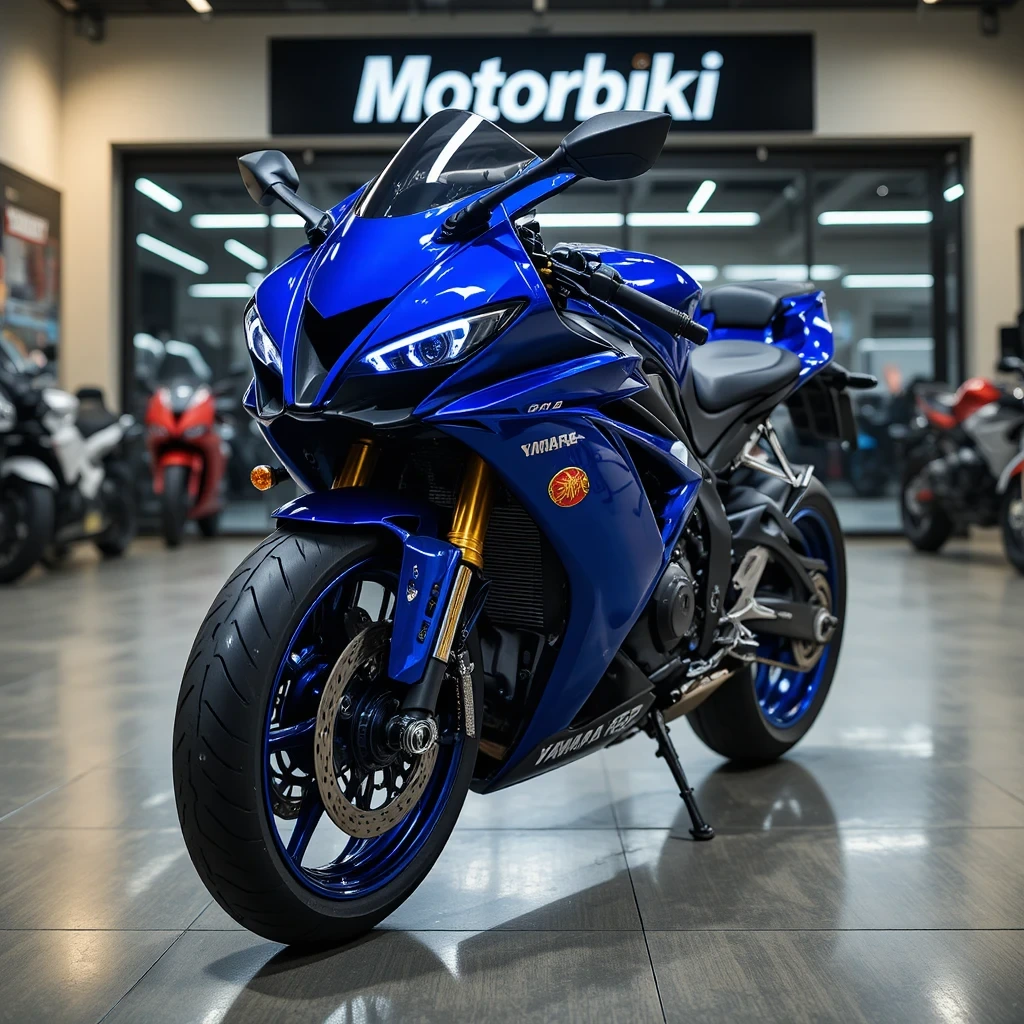7 Proven Yamaha R9 Problems and Expert Fixes You Must Know (2025 Guide)
Introduction
The Yamaha R9 represents one of the most anticipated releases in the sportbike world. Combining the iconic DNA of the R-series with the thrilling CP3 engine platform, it delivers sharp handling, powerful acceleration, and a dynamic design meant for both road and track. However, even with Yamaha’s precision engineering, some riders have reported recurring issues that deserve attention.

This article explores Yamaha R9 problems experienced by owners. Each section includes the most noticeable symptoms, mechanical causes, and practical solutions provided by experts and experienced riders. If you’re considering buying or already own a Yamaha, this complete guide will help you keep your machine performing flawlessly.
1. Engine Overheating
Introduction
One of the most frequent Yamaha R9 problems involves engine overheating, especially during heavy traffic or long-distance summer rides. The R9’s high-revving engine produces considerable heat that must be efficiently managed through its cooling system.
Symptoms
Riders usually observe that the temperature gauge climbs rapidly, and the cooling fan runs continuously even after short rides. Some notice a reduction in performance, a distinct metallic smell after stopping, or slight engine knocking due to excessive heat. Prolonged overheating can also cause the engine to lose smoothness, making gear transitions rougher.
Causes
The main reason for this issue often lies in low coolant levels or trapped air pockets within the radiator system. Dust and road debris can clog the radiator fins, reducing heat dissipation. A malfunctioning fan switch or thermostat can also prevent the fan from activating at the correct temperature. In some cases, using poor-quality engine oil that loses viscosity under heat contributes to the problem.
Solutions
To prevent overheating, owners should regularly inspect and top up the coolant using Yamaha’s recommended type while ensuring no air remains in the system. Cleaning the radiator and checking fan operation should be part of every maintenance cycle. If the engine still runs hot, replacing the thermostat or fan relay usually restores proper cooling. Lastly, using a premium synthetic oil designed for high temperatures ensures smoother and cooler engine operation.
- Use parts from a good and quality company that are both long-lasting and durable.
- Have your motorcycle checked by a professional mechanic on a daily basis and have it serviced within the stipulated time.
- Use good-quality oil and lubricate all parts of the motorcycle well so that it runs smoothly.
- Improve driving quality and keep the motorcycle speed according to the road conditions.
2. Clutch Slippage
Introduction
Another typical concern among R9 problems is clutch slippage, which occurs when the engine revs increase but power does not transfer efficiently to the rear wheel. This issue affects acceleration, gear smoothness, and overall riding confidence.
Symptoms
Riders often describe the feeling of the bike losing grip during acceleration, especially in higher gears. There may be a faint burning smell or difficulty achieving consistent throttle response. Shifting gears may feel delayed or unusually light, signaling that the clutch plates are not fully engaging.
Causes
The most frequent causes include worn-out clutch friction plates and weakened springs that reduce pressure on the clutch pack. Over time, aggressive riding or poor maintenance can glaze the clutch plates, making them slippery. Incorrect clutch lever adjustment and using engine oil not suitable for wet clutches can also lead to premature wear.
Solutions
Fixing clutch slippage begins with inspecting the clutch pack and replacing worn components with OEM Yamaha parts. Adjusting the clutch cable for proper free play restores engagement precision. Riders should switch to a JASO MA2-certified oil, as these formulations prevent plate glazing and maintain grip. Regular servicing and smooth riding habits will significantly extend clutch life.
- Use parts from a good and quality company that are both long-lasting and durable.
- Have your motorcycle checked by a professional mechanic on a daily basis and have it serviced within the stipulated time.
- Use good-quality oil and lubricate all parts of the motorcycle well so that it runs smoothly.
- Improve driving quality and keep the motorcycle speed according to the road conditions.

3. Electrical Malfunctions
Introduction
Electrical faults are among the more unpredictable Yamaha R9 problems, ranging from flickering headlights to non-start conditions. Given the R9’s advanced electronics and digital systems, even small electrical inconsistencies can create multiple warning signals.
Symptoms
Riders have reported dashboard lights flickering when revving, occasional ECU error codes, or a sudden loss of power during ignition. The bike may also refuse to start after being parked overnight, which often indicates a weak battery or parasitic drain.
Causes
These malfunctions often originate from loose wiring connections, corroded terminals, or an aging battery that fails to maintain voltage under load. Moisture intrusion into connectors, especially after washing or riding in rain, can disrupt sensor readings. In rare cases, a faulty rectifier or alternator may cause unstable current output, triggering system errors.
Solutions
The ideal approach involves inspecting all visible wiring connections and ensuring each ground point is tight and corrosion-free. Applying dielectric grease to key connectors prevents moisture buildup. A battery with higher cold-cranking amps improves reliability, while replacing a weak regulator or stator stabilizes the power supply. Storing the motorcycle in a dry area further reduces electrical risks.
- Use parts from a good and quality company that are both long-lasting and durable.
- Have your motorcycle checked by a professional mechanic on a daily basis and have it serviced within the stipulated time.
- Use good-quality oil and lubricate all parts of the motorcycle well so that it runs smoothly.
- Improve driving quality and keep the motorcycle speed according to the road conditions.
4. Transmission Stiffness
Introduction
Several riders have discussed Yamaha R9 problems related to transmission stiffness, especially during gear changes at high RPMs. A smooth gearbox is crucial for the sportbike experience, and any resistance can reduce riding pleasure.
- Use parts from a good and quality company that are both long-lasting and durable.
- Have your motorcycle checked by a professional mechanic on a daily basis and have it serviced within the stipulated time.
- Use good-quality oil and lubricate all parts of the motorcycle well so that it runs smoothly.
- Improve driving quality and keep the motorcycle speed according to the road conditions.
Symptoms
Owners typically notice difficulty engaging first gear or an occasional “clunk” when shifting between gears. Some report false neutrals during acceleration, or that the gearbox feels rough once the engine reaches operating temperature.
Causes
A stiff gearbox is usually linked to improper clutch operation or low transmission oil levels. Over time, shift forks or gear dogs may wear, leading to mechanical resistance. Incorrect quickshifter calibration can also interfere with the timing between throttle cut and gear engagement.
Solutions
Regular oil changes using the correct viscosity help maintain gearbox smoothness. Technicians should inspect internal gear components during routine service intervals to identify early wear. Recalibrating the quickshifter or disabling it temporarily during diagnostics ensures proper shift timing. Riders can also benefit from adjusting clutch lever travel for a consistent feel and engagement.
- Use parts from a good and quality company that are both long-lasting and durable.
- Have your motorcycle checked by a professional mechanic on a daily basis and have it serviced within the stipulated time.
- Use good-quality oil and lubricate all parts of the motorcycle well so that it runs smoothly.
- Improve driving quality and keep the motorcycle speed according to the road conditions.
5. Front Suspension Harshness
Introduction
While the R9’s sport-tuned KYB suspension is designed for precise control, many riders find it too firm for everyday roads. Among comfort-related R9 problems, front suspension harshness is the most common.
Symptoms
Riders often experience a bumpy ride on uneven surfaces and a noticeable vibration through the handlebars. The front end can feel rigid during corner entry, reducing confidence in turns. Over time, the stiff setup also contributes to uneven tire wear and increased rider fatigue.
Causes
The stock suspension is calibrated for performance rather than comfort. If preload or rebound settings are not adjusted to the rider’s weight, the forks may compress inadequately over bumps. Old fork oil or worn seals can also restrict damping efficiency, worsening the stiffness.
Solutions
Suspension tuning is the most effective fix. Adjusting preload and rebound settings according to body weight and riding style can transform comfort. Changing the fork oil at regular intervals restores smooth damping, while riders seeking extra comfort can upgrade to softer aftermarket springs. Proper tire pressure also helps balance suspension performance.

6. Chain Noise and Premature Wear
Introduction
Another recurring concern among Yamaha problems is chain noise or early chain wear. Since the R9 produces significant torque, maintaining its drive chain is vital for performance and safety.
Symptoms
A clicking or slapping sound from the rear section often signals chain tension issues. Riders might also feel vibration in the footpegs or notice uneven power delivery at low speeds. In some cases, visible rust or slack appears on the chain even with moderate mileage.
Causes
Chain noise generally stems from poor lubrication or incorrect tension. Over time, riding in dusty or wet conditions accelerates chain degradation. A misaligned rear wheel or worn sprocket teeth also shorten chain lifespan.
Solutions
Regular lubrication every 500–600 kilometers with a quality chain lube prevents rust and friction. Checking alignment during tire changes ensures smooth chain travel. If the chain has tight spots or significant stretch, replacing both the chain and sprockets simultaneously restores harmony to the drivetrain. Using a rear paddock stand for maintenance simplifies tension adjustments and improves chain health.
- Lubricate all parts of the motorcycle properly.
- Lubricate and tighten the motorcycle chain properly.
- Use a chain from a good and quality company.
- Service the motorcycle properly.
7. Braking System Fade
Introduction
Braking performance is crucial for a sportbike, and some riders have listed braking fade among the notable Yamaha problems. Although the R9 features powerful dual discs, repeated high-speed braking can reduce effectiveness over time.
Symptoms
Riders may feel that the brakes lose bite after continuous use, especially during spirited rides or track sessions. The lever might feel softer, requiring more pressure to stop the bike effectively. Extended braking distances are another clear indicator of fade.
Causes
This problem typically arises from overheated brake fluid or glazed pads. Stock brake pads may not perform optimally under extreme temperatures, and contaminated fluid reduces hydraulic efficiency. Inadequate air ventilation around the calipers can also contribute to heat buildup.
Solutions
Flushing and replacing the brake fluid with a high-performance DOT 4 or DOT 5.1 formula helps maintain consistent pressure. Upgrading to sintered or racing-grade pads enhances heat resistance. Riders should also clean the calipers and ensure rotors are free from oil or debris. Proper maintenance and timely component replacement will eliminate fade and restore braking confidence.
- Use parts from a good and quality company.
- Lubricate all parts of the motorcycle well.
- Improve the style of riding the motorcycle.
- Lubricate all brake pads to work properly.
FAQs –R9 Problems and Maintenance (2025)

1. What are the most common Yamaha R9 problems?
The most common Yamaha R9 problems include engine overheating, clutch slippage, electrical malfunctions, gearbox stiffness, front suspension harshness, chain wear, and brake fade. Each can be fixed with proper maintenance and inspection.
2. Why does my Yamaha R9 engine overheat so quickly?
Overheating usually results from low coolant levels, blocked radiator fins, or poor airflow in hot weather. Cleaning the radiator and using high-grade coolant can prevent this issue.
3. How can I fix clutch slippage on my Yamaha R9?
Clutch slippage can be resolved by replacing worn plates, adjusting cable tension, and using JASO MA2-certified engine oil designed for wet clutches.
4. Are Yamaha R9 electrical issues common?
Yes, a few riders report minor electrical issues such as flickering lights or ECU errors. Regular wiring inspection and keeping the connectors dry help maintain stability.
5. Why does my R9 feel stiff when shifting gears?
Stiff shifting is typically caused by low transmission oil or clutch misadjustment. Changing the oil and recalibrating the quickshifter usually smooths out gear transitions.
6. How do I make the R9 suspension more comfortable?
Adjusting preload and rebound to your weight and replacing old fork oil can improve comfort. Some riders upgrade to softer springs for daily use.
7. What causes chain noise on the R9?
Chain noise occurs when the chain is dry, loose, or misaligned. Regular lubrication and checking alignment keep the drivetrain silent and smooth.
8. How often should I service my Yamaha R9?
Routine servicing every 6,000 km or every six months is recommended. Frequent oil and filter changes ensure consistent engine performance and reliability.
9. Why do my R9 brakes lose power during long rides?
Brake fade happens due to overheated pads or old brake fluid. Replacing the fluid with DOT 4 or DOT 5.1 and using sintered pads improves braking consistency.
10. Is the Yamaha R9 reliable for long-distance touring?
Yes, the Yamaha is reliable when maintained properly. Riders who manage oil changes, cooling, and chain care regularly can enjoy trouble-free long rides.
11. What type of oil is best for the Yamaha R9?
A full-synthetic, high-temperature oil with JASO MA2 certification is ideal. It maintains viscosity under heat and supports smooth clutch engagement.
12. How can I prevent electrical faults on my Yamaha R9?
Protect connectors from moisture, ensure tight grounding points, and use dielectric grease during maintenance to prevent corrosion or short circuits.
13. Does the Yamaha R9 require special brake pads or rotors?
While the stock setup performs well, many riders upgrade to racing-grade sintered pads for improved heat tolerance and shorter stopping distances.
14. Can Yamaha R9 overheating damage the engine permanently?
Yes, prolonged overheating can warp metal components or damage the head gasket. It’s best to stop the ride immediately when the temperature light appears.
15. What is the best way to maintain Yamaha R9 performance?
Regular oil changes, timely coolant replacement, clean chain maintenance, and checking all electrical systems ensure your Yamaha R9 delivers maximum performance and reliability every ride.
Yamaha R9 (2025) – Complete Specifications
| Category | Specification Details |
| Model Name | Yamaha R9 (2025) |
| Manufacturer | Yamaha Motor Company, Japan |
| Category Type | Supersport / Middleweight Performance Bike |
| Engine Type | 890cc, inline 3-cylinder (CP3 platform), 4-stroke, liquid-cooled |
| Engine Configuration | DOHC, 12 valves |
| Displacement | 890 cubic centimeters |
| Bore x Stroke | 78.0 mm x 62.1 mm |
| Compression Ratio | 11.5: 1 |
| Maximum Power | 117 horsepower @ 10,000 rpm |
| Maximum Torque | 93 Newton-meters @ 7,000 rpm |
| Fuel Delivery System | Electronic fuel injection with YCC-T (Yamaha Chip Controlled Throttle) |
| Ignition System | TCI (Transistor Controlled Ignition) |
| Starting System | Electric starter |
| Lubrication Type | Wet sump system |
| Transmission Type | 6-speed manual with quickshifter (up & down) |
| Clutch Type | Assist and slipper clutch |
| Final Drive | O-ring chain drive |
| Frame Type | Aluminum Deltabox frame |
| Subframe | Detachable aluminum subframe |
| Front Suspension | Fully adjustable KYB 41mm USD forks |
| Rear Suspension | Link-type KYB monoshock, adjustable for preload and rebound |
| Front Wheel Travel | 130 mm |
| Rear Wheel Travel | 120 mm |
| Front Brake | Dual 298 mm hydraulic discs, 4-piston calipers |
| Rear Brake | Single 245 mm disc, single-piston caliper |
| ABS System | Dual-channel ABS (standard) |
| Traction Control | 6-axis IMU with traction and slide control |
| Riding Modes | Sport, Street, Rain, and Custom modes |
| Quickshifter | Standard – upshift and downshift |
| Steering Damper | Electronic adjustable damper |
| Front Tire Size | 120/70 ZR17 |
| Rear Tire Size | 180/55 ZR17 |
| Tire Type | Tubeless radial sport tires |
| Wheel Type | Lightweight cast aluminum alloy wheels |
| Wheelbase | 1,435 mm |
| Overall Length | 2,065 mm |
| Overall Width | 730 mm |
| Overall Height | 1,145 mm |
| Seat Height | 825 mm |
| Ground Clearance | 135 mm |
| Fuel Tank Capacity | 14 liters |
| Curb Weight (Wet) | 193 kilograms |
| Battery Type | 12V maintenance-free battery |
| Lighting System | Full LED (headlights, indicators, taillight) |
| Instrument Cluster | 5-inch full-color TFT display with smartphone connectivity |
| Connectivity | Bluetooth + Yamaha MyRide app integration |
| Top Speed | Approximately 240 km/h (electronically limited) |
| 0–100 km/h Acceleration | Around 3.1 seconds |
| Mileage / Fuel Economy | 20–22 km/l (approx.) |
| Emission Standard | Euro 5 / BS6 compliant |
| Available Colors | Icon Blue, Raven Black, and Tech Gray |
| Optional Accessories | Quickshifter tuning kit, frame sliders, rear seat cowl, touring windscreen |
| Warranty | 2 years standard, extendable up to 5 years |
| Launch Year | 2025 |
| Expected Price (Global) | Between $11,999 – $13,499 (varies by country) |
Yamaha R9 Price and Availability (2025 Global Overview)
The 2025 Yamaha R9 has quickly become one of the most anticipated sportbikes of the year, blending Yamaha’s race-inspired DNA with modern street practicality. Its global pricing strategy is positioned to make it a strong competitor in the middleweight segment, offering superb value compared to rivals like the Triumph Street Triple 765 RS and the Ducati Supersport 950. Depending on the region, the Yamaha R9 is priced between $11,999 and $13,499 USD, but the exact cost varies due to import duties, taxes, and currency fluctuations.
In the United States, the Yamaha R9 is expected to retail around $12,499, placing it just above the MT-09 but below the YZF-R1, which makes it an appealing choice for riders seeking top-tier performance without the extreme superbike price tag. European markets such as the UK, Germany, and France have seen pricing between €12,000 and €13,500, depending on dealer options and region-specific packages. In Japan, Yamaha’s home market, the R9 is priced around ¥1,550,000, while in Australia, it is expected to start near AUD 18,999.
In Asian markets like India, Thailand, and Indonesia, Yamaha aims to attract both enthusiasts and semi-professional riders by offering competitive pricing between ₹12–14 lakh (India) and THB 480,000 (Thailand). The R9 is also confirmed for availability in late 2025 in most regions, with pre-orders already open in North America, Japan, and select European countries. Yamaha has announced phased deliveries starting Q1 2026 for markets with high demand, ensuring adequate supply and global dealer support.
The Yamaha R9 will be available in three color options — Icon Blue, Tech Gray, and Raven Black — and comes with optional accessories including a quickshifter kit, frame sliders, and a sport touring windscreen. With a balance of performance, technology, and affordability, the 2025 Yamaha R9 is set to redefine the mid-segment supersport market across continents.
Real User Feedback on the Yamaha R9
Many riders are impressed by the Yamaha R9’s blend of track capability and street usability. In early reviews, people say they felt “confident” right from the first ride, noting that the R9 doesn’t feel awkward or overwhelming even when pushed. The CP3 engine receives praise for its strong mid-range torque, which makes everyday riding smooth and forgiving.
Several enthusiasts mention that the chassis balance is “superb”, particularly in corners, and that the bike’s handling gives them more control than expected. The electronics suite — including ride modes, traction control, slide control, quickshifter, and lean-sensitive aids — earns strong approval. Also, many find the styling, aerodynamic bodywork, and MotoGP-inspired winglets aesthetically striking; when seen in person, users tend to like how premium the bike looks.
On the other hand, some critiques appear around comfort and braking feel. A number of riders report that the seating position is quite aggressive, especially for longer rides, causing discomfort in the back and wrists. The OEM tires (for example, RS11) are considered to perform well initially, but users say they wear quickly, especially when the bike sees track or spirited riding.
A few mention that the front brake lever “feel” isn’t as sharp or immediate as expected from high-end Brembo equipment, especially under repeated heavy braking. There are also concerns about availability and pricing — many people say they ordered the R9 but are waiting months for deliveries, or that dealer estimates keep getting pushed out. In some countries, taxes and import costs make the R9 quite costly, which affects perceived value.
MCN / Motorcycle News – “2025-on Yamaha R9 review: real world YZF supersport kicks!”
MCN values how the R9 mixes MT-09-like friendly power delivery with serious handling for a street/track hybrid. Reviewers appreciated that, despite its performance, the R9 never feels intimidating. They also note the build quality is excellent and the features are “fully loaded.” A mild criticism was that the brake feel lacked a little sharpness and feedback for some riders. Motorcycle News
Despite the negatives, many users conclude that the R9 is a strong return to form for Yamaha in the supersport class. They appreciate that it balances performance and usability: capable on track, yet manageable in daily riding. Many say that once you adjust suspension settings and ride modes to your style, the positives more than outweigh the compromises.
Conclusion
The Yamaha R9 stands as a remarkable evolution of Yamaha’s sportbike legacy, combining agility, design, and power into one thrilling package. However, awareness of these common issues enables riders to maintain reliability and longevity. Whether it’s managing engine heat, adjusting clutch performance, or fine-tuning suspension, each problem has a practical solution that keeps your motorcycle performing at its peak.
Addressing these Yamaha R9 problems early ensures your machine delivers the exhilarating performance it was built for—without compromise. Regular maintenance, correct riding habits, and quality parts are the secrets to keeping your Yamaha R9 running perfectly mile after mile.






